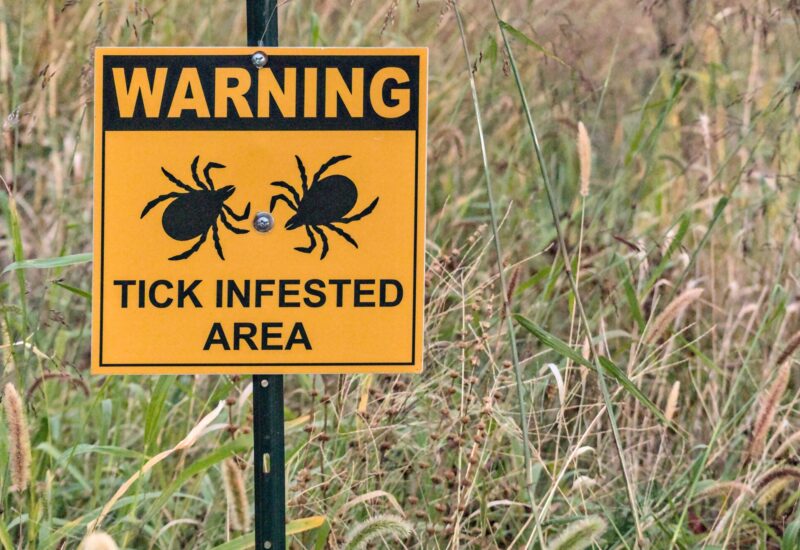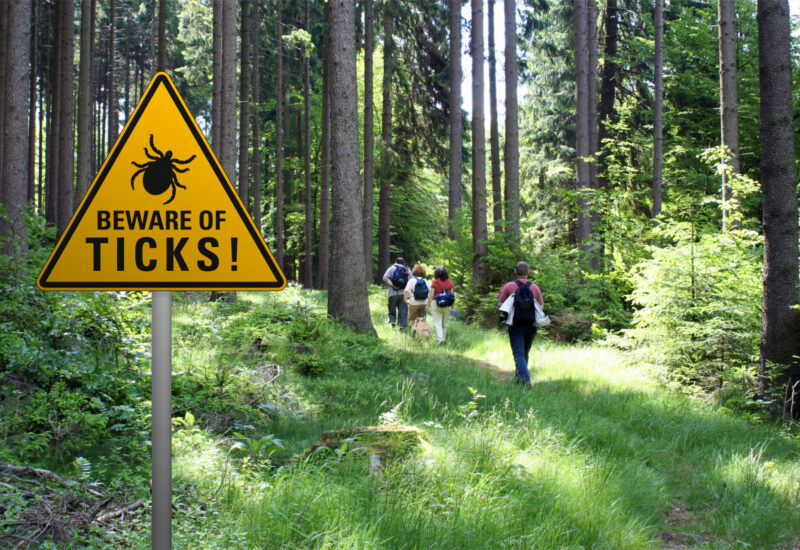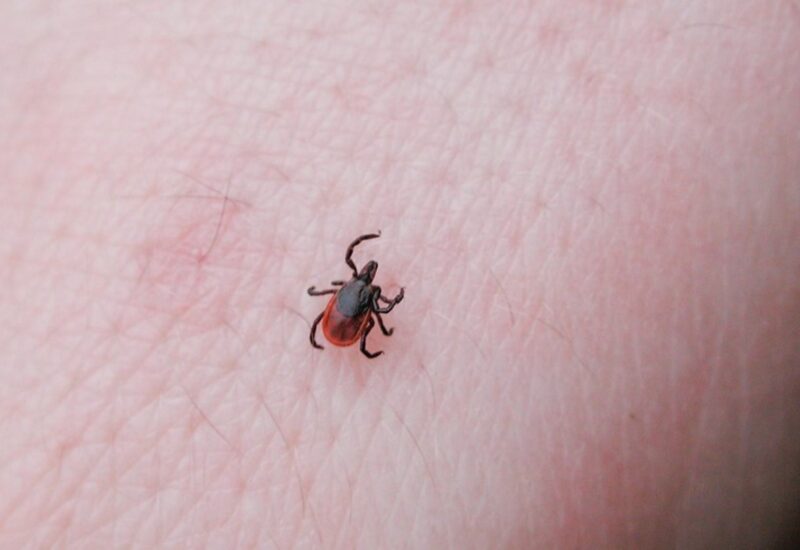What To Do When You Find A Tick Bite On Your Child

How To Treat A Tick Bite On Your Child
We know how frightening it is — that moment when you find a tick attached to your child. It’s a modern-day nightmare. Your mind starts swirling with worries about Lyme disease, infection and “how do I get this thing off them anyway?” There’s no doubt that these parasites are scary, but that doesn’t mean you have to wrap your kids in bubble wrap or lock them in their bedrooms all summer. We’ll teach you everything you need to know about removing ticks and preventing them from biting, that way you can relax when the kids head outside to play.

How do I remove a tick from my child?
A tick has bitten your child and is still latched to your child’s skin, what do you do next?
“The best advice for parents who find a tick attached to their child is to not panic,” says Kristen Nordlund, a public affairs officer for the Centers for Disease Control and Prevention (CDC). “There are simple steps they can take to remove the tick with a set of fine-tipped tweezers.”
The following tick removal process comes directly from the CDC:
- Use fine-tipped tweezers to grasp the tick as close to the skin’s surface as possible.
- Pull upward with steady, even pressure. Don’t twist or jerk the tick; this can cause the mouth-parts to break off and remain in the skin. If this happens, remove the mouth-parts with tweezers. If you are unable to remove the mouth easily with clean tweezers, leave it alone and let the skin heal.
- After removing the tick, thoroughly clean the bite area and your hands with rubbing alcohol, an iodine scrub, or soap and water.
- If your child develops a rash or fever within the next few weeks after the tick was removed, take them to a doctor and make sure to tell him or her about the recent tick bite.

Ticks usually need to be attached for several hours in order to spread a disease. For example, the blacklegged (or deer tick) needs to be attached for about 24 hours to pass on Lyme disease. It is also important to know that not everyone who gets Lyme disease will have the “telltale” bull’s eye rash. It’s always a good idea to have your child tested more than once for a tickborne disease because sometimes tests can come back as false negatives. You can learn more about different kinds of ticks and how to identify them in our Pest Library.
Common Tick Bite Removal Myths
There are a lot of myths and misconceptions surrounding tick removal. Trying to burn or suffocate a tick is not only ineffective, it can be dangerous! These techniques can cause the tick to regurgitate into the bloodstream, possibly introducing a tickborne disease. Common myths include nail polish, petroleum jelly, rubbing alcohol, gasoline and a lit match. Avoid pulling a tick out with your fingers, you’re more likely to squeeze the tick and push its fluids into your child’s body. There’s also rumors that ticks have the ability to burrow under the skin and that if a tick’s head breaks off in the skin, a new tick will grow from it. There’s no need to worry, these stories are urban legends.
“We have heard of a lot of stories of how people remove ticks,” says Norlund. “But there are several [tick removal] devices on the market and there is an easy, step by step way to do it yourself.”
Best Way To Remove A Tick
It’s always a good idea to have tweezers or a tick removal tool handy. You can find plenty of options on Amazon. Some of the most popular tick removal tools on Amazon are the TickEase tick remover, Tick Key, TICKED OFF tick remover and Tick Twister.

How To Dispose Of A Tick
“When a parent removes a tick from a child,” says Nordlund, “They should dispose of the tick by submerging it in alcohol, placing it in a sealed bag/container, wrapping it tightly in tape, or flushing it down the toilet. Remember to never crush a tick with your fingers.”
Do I need to save a tick?
“People who have removed a tick often wonder if they should have it tested,” Nordlund explains. “Some state or local health departments offer tick identification and testing as a community service or for research purposes — such as evaluating infection rates among ticks in an area.” Although she shares that it’s not always worth while to test the tick you find. If the tick tests positive for a disease, it does not mean that your child was infected and often, your child will probably show symptoms before you even receive the test results. If the tick tests negative, it could give you a false sense of security that your child is fine when they may have been unknowingly infected by another tick.
If you would like to have a tick tested, keep it in an airtight container or wrap it in tape and contact your local health department to see if they offer testing services.
How do I protect my child from ticks?
The best thing you can do is prevent your child from getting bit by a tick in the first place. These parasites are common in most parts of the United States from April through November, and they don’t all die in the winter! Ticks wait out the winter hidden under leaf litter and insulated by snow. Read through the following tips to protect your kids from these tiny pests!
What To Wear
Have your children wear long sleeves, pants and tall socks if they are going hiking or spending time in the woods. Bonus points if they tuck in their shirt, tuck their pants into their socks, and wear darker colors which are less attractive to ticks.

Tick Repellents
Insect repellents, such as those containing DEET, are added protection from ticks. Follow all the directions on the label when applying the product and contact poison control or your doctor if your child has an allergic reaction.
Repellents with the chemical permethrin can be applied to clothes, tents and sleeping bags. Always read the label before applying!
Avoiding Ticks
Ticks don’t jump, fly or live in trees. These parasites live on the ground and crawl to get around. They wait on a twigs or tall pieces of grass and will crawl onto an animal or person when they walk by. Encourage your kids to avoid tall grass and leaf litter, and to stick to the middle of the trail when hiking.
How To Check For Ticks
After your child comes inside, immediately check their clothes for ticks. Use a lint roller to pick up unwanted hitchhikers or throw clothing in the dryer on the highest heat setting for an hour to kill ticks. Bathing within the first two hours after coming indoors is a great opportunity for your child to check for ticks and may wash away those that are unattached. Prime spots that you should always check are between toes, ankles, behind knees, waistline, inside elbows, armpits, behind the ears and scalp. These pests prefer hidden nooks and crannies.

How To Protect My Yard From Ticks
Use these easy tips to make your yard a safer place for your kids to play. Get rid of tick habitats by regularly mowing the lawn and removing leaf litter and brush. Store firewood away from your house (this is actually a good way to keep away many common pests like termites and carpenter ants). You can install a 3 foot wide barrier of stones, gravel or woodchips between your lawn and the woods to deter ticks from crawling into the yard. Also, avoid planting trees and plants that attract deer and other wild animals that may carry ticks into your lawn. For added protection, contact a pest management company to perform a barrier treatment around the edges of your property to help stop ticks from entering the yard.

We know ticks are still terrifying, but we hope you feel better prepared with this information. Better yet, we’d like to give you a Tick Twister so you’re even more prepared. CLICK HERE to have a Tick Twister from Catseye mailed to you!






